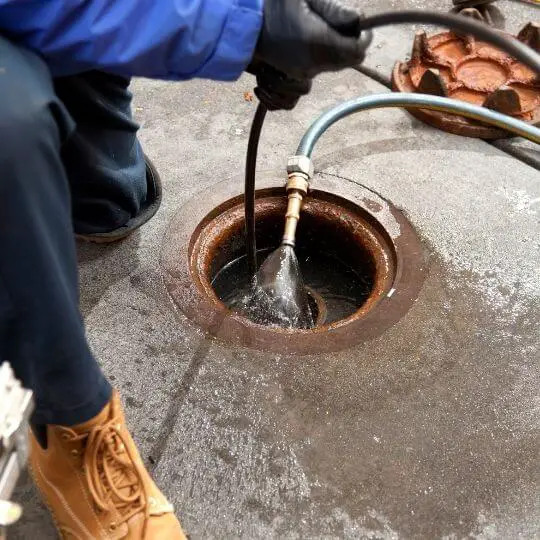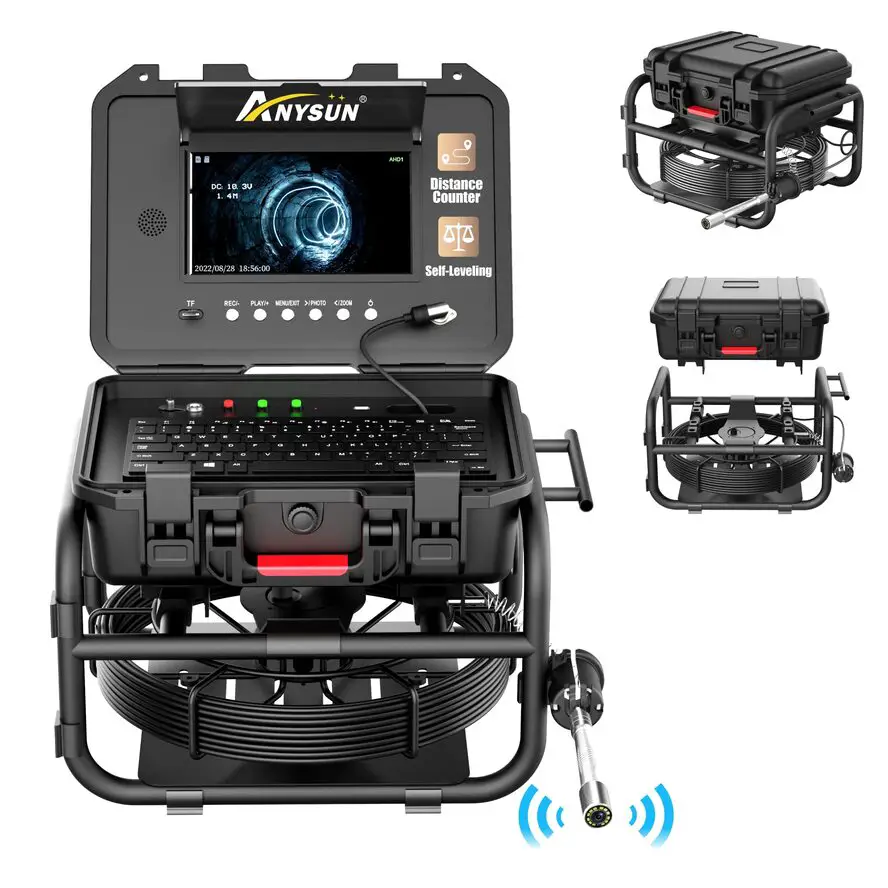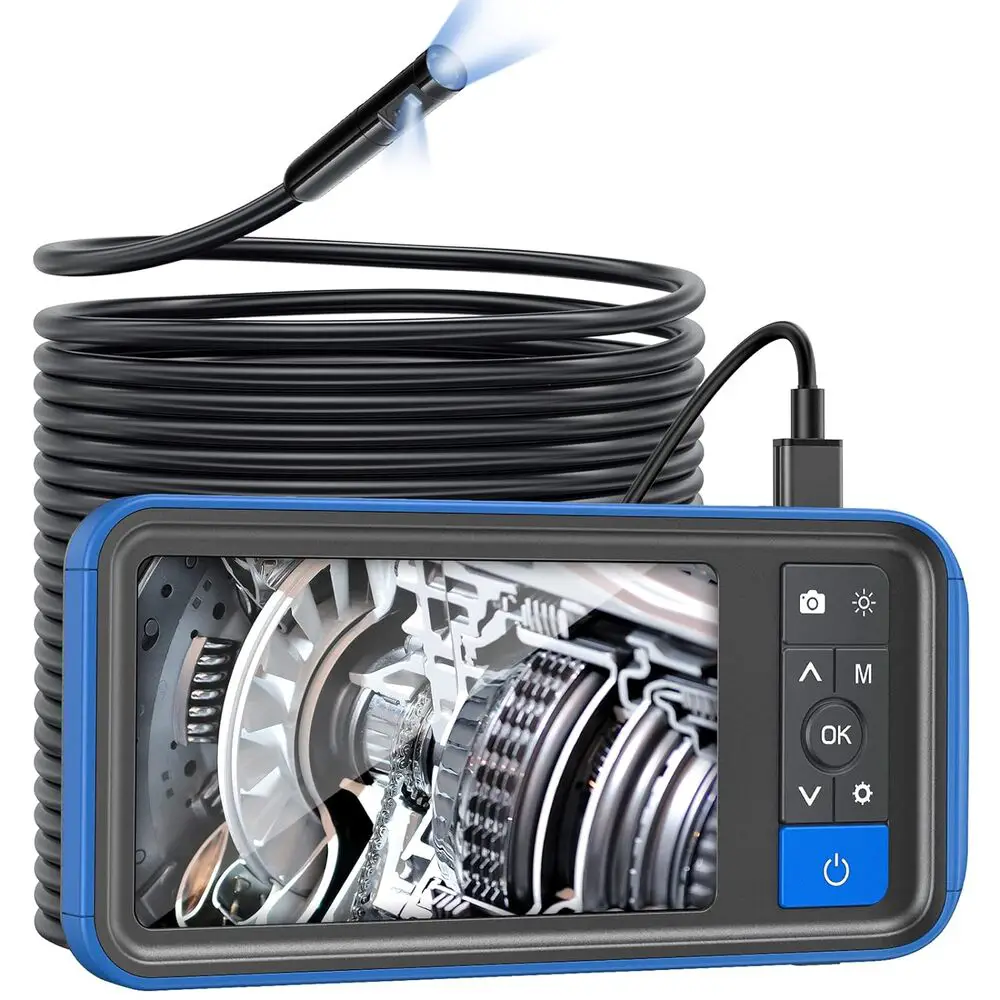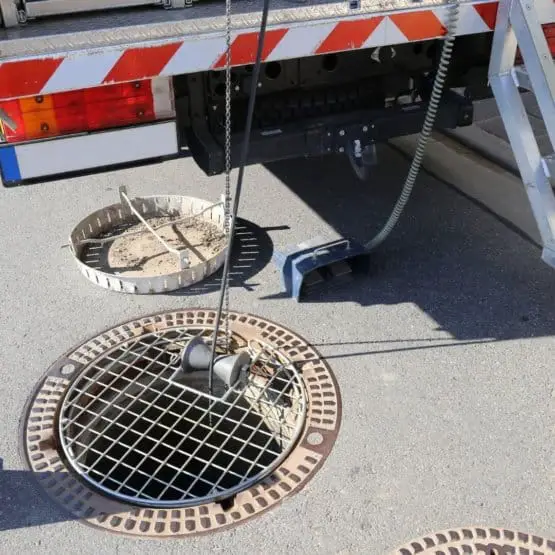When it comes to sewer camera inspections, there are a variety of camera options available on the market. In this article, we will be comparing several common camera brands used in the industry, including Pranite, Anysun, Ridgid, Hbuds, and Teslong.
From our research and well-rounded experience the best sewer camera for the average user is
We went through each camera’s features, such as clarity, self-leveling capabilities, durability, and push rod performance. We will help you to make a clear understanding of which cameras are worth investing in for your sewer inspection needs.
Best Sewer Camera – Top Picks

Choosing the best sewer camera possible can save you money that you would otherwise pay for a professional inspection. Not only that, but it can keep you from making some crucial mistakes, such as digging into the wrong area or breaking your plumbing system.
You will be able to make preventive inspections of drain pipes and sewer lines to identify any issues before they become major problems. Using a sewer camera can help catch things like root intrusions, cracks, blockages, or pipe damage early while they are still relatively easy and affordable to fix.
Furthermore, picking a sewer camera shouldn’t be so hard.
1. Best Overall – Anysun All-in-1 Sewer Camera

Recently, I had the opportunity to put the Anysun sewer camera to the test and it’s safe to say that it’s a capable system for professionals entering the inspection industry. Its built-in features simplify the inspection process; the 512Hz sonde transmitter and distance counter are especially handy for locating blockages with precision, eliminating any guesswork.
The camera’s self-leveling capability ensures that your footage remains upright, making it far easier to understand what you’re looking at, while the waterproof design and adjustable LEDs enhance visibility in a variety of pipe conditions. Recording is a breeze with just one button to push, and the keyboard is straightforward to use for annotating videos.
Although it provides excellent value, I did notice that the customer service is crucial and available round-the-clock, which is reassuring. The push rod cable’s durability suits most environments, and the IP68-rated camera holds its own against water and dirt. After using it, remember to clean the camera head and use a soft cloth to keep it dry.
However, bear in mind that while overall the camera offers a great balance of features and price, some users might seek additional functionalities that come with higher-end models. It’s a strong entry-level candidate with some useful features that will serve you reliably in the field.
2. Budget Option For Small Drains – Teslong Inspection Camera

After spending some time with the Teslong sewer camera, it’s clear that it stands out for its high-definition imaging and exceptional flexibility, which can navigate through pipes with ease. The illumination provided by the built-in light is ample, allowing you to see obstructions and pipe conditions clearly. Although some users may find the cord a bit rigid, this characteristic helps with the pushing of the camera through tougher blockages.
The rechargeable battery is a convenient feature, eliminating the constant need for disposable batteries, and the ease of set up makes it suitable for immediate use.
Keep in mind, however, that the camera might occasionally present challenges when angling to view the entirety of a pipe. And, even though the overall build quality is notable for the price, ensure you’re comfortable with adjusting the fiber cable to get the best visual results.
In essence, the Teslong sewer camera is a well-regarded choice, praised for its combination of usability, picture clarity, and durability. It’s a reliable partner for both professionals and DIY enthusiasts tackling drain inspections, although mastering its use may take a little practice.
3. Best Professional Camera: RIDGID 40798 SeeSnake Camera

While this product has some features that might seem like a flaw in the beginning, this is, in fact, the best sewer camera for professionals.
This is a durable unit made out of stainless steel. There is no plumbing system that it cannot handle. It comes with a 100 ft cable which can help you reach deep within your pipes.
It uses sonde for location, and it can help you locate the camera head without mistakes. Also, the camera head and the cable are thin enough to make the product suitable for 1 to 40-inch diameter lines.
The best part is that this camera is extremely lightweight. The entire product weighs only 11 pounds!
As such, you can transport it everywhere with ease.
However, some of the downsides are a bit dull lighting and a rather small screen – although the latter is changeable.
Key features:
- 100 ft cable
- Underground locator
- 6 LEDs
- 27 diameter
Related: Sewer Inspection Guide
How to Pick the Best Sewer Camera

Of course, just like with any other item or product you plan on purchasing, you need to know precisely what you’re looking for before you can make a good decision for yourself. This can help you think everything through and maybe even find a product that we haven’t listed that might be a better fit for your scenario.
As such, there are a few things you need to consider when choosing on which product to buy. This includes:
Camera Quality
The camera quality is the most important feature – and it’s easy to guess why. If the camera isn’t of a good enough quality, nothing else will matter much.
First off, you need to think about how you’ll be able to control the camera and what is the rotating angle. You should always strive for a 360o camera that will help you capture everything.
Next, you need to consider how you’ll control the camera and rotate it. For example, you’ll likely need to steer the camera into a sharp-bending pipe. You need to be able to do this without a mistake, and not every camera can achieve that.
In general, you should look for high-end cameras that use robot technologies to help users navigate them no matter the obstacles. For example, many manufacturers produce push pan-tilt cameras.
Of course, the camera should have the right diameter. Otherwise, it might not fit properly into your plumbing system.
Another thing not many people think about is that the best sewer camera needs to be water-resistant. In fact, this might easily be the single most important feature for you to consider. You’ll use this camera in a moist area, and you might even ran into water inside the pipes.
As such, we would advise you to look for cameras that have an IP67 rating or better. [2]
Screen Quality
A good screen is just as important as a good camera, as this is where everything captured will be displayed. As such, you should look for cameras with a screen that can produce a clear and usable image.
At the same time, the display should be large enough for you to see everything clearly. If it’s too tiny, you might not differentiate whether you have an obstacle, or did tree roots penetrate your PVC pipe.
Lighting
Pipes are a dark location. As such, good sewer cameras come with proper lighting systems that will help you see what’s going on inside.
Most, if not all, sewer cameras come with a LED light. However, not all will produce a sufficient amount of light for you to see everything clearly. Make sure to always get a camera with good lighting.
Battery
Most sewer cameras are battery-powered. This is to prevent accidents that might happen when you combine electricity with water and sewage.
However, you have to make sure you get a camera with a battery that can last for a sufficient amount of time. In fact, we would suggest you get a camera that can stay turned on for 8 hours or more.
Sure, you (probably) won’t spend 8 hours inspecting your pipes, but it’s always better to ensure you have some extra time rather than realizing you’re out of battery when you need it the most.
Cable Length
As mentioned several times before, sewer cameras are located on top of a cable. This cable should be long enough to go all the way through your pipes to locate an issue deep within your sewer system.
In general, you should look for a sewer camera that is at least 100 ft in length.
Bottom Line

A sewed camera can truly make a difference when it comes to plumbing fixes – whether you are an amateur or a professional. It can help you locate the issues that you otherwise could never, which can help save you time and money.
Sure, you might think that buying the best sewer camera is a waste of money, but they usually cost less than if you were to pay for a professional to inspect your pipes. Not to mention the amount of money you’d waste if you don’t locate the problem as quickly as possible!
We hope this guide was helpful, and that you’ve managed to find the right product for you. If not, we still welcome you to use our buyer’s guide and find a sewer camera that works the best for you and your plumbing.

Michael Davis is a heating & plumbing expert who currently works as independent contractor in SC. He also writes for Plumbertip.
For almost 10 years he worked on various plumbing tasks across South Carolina.


